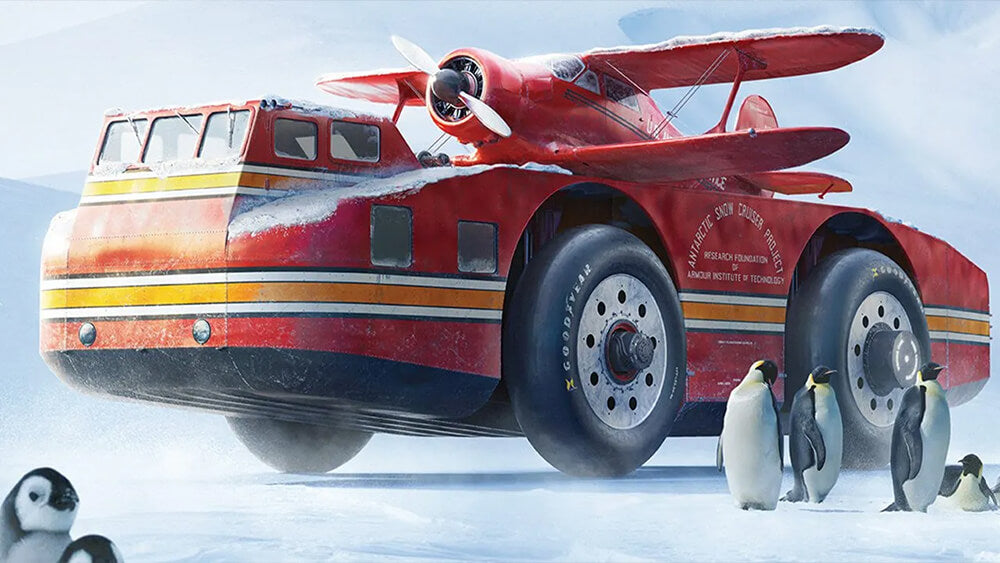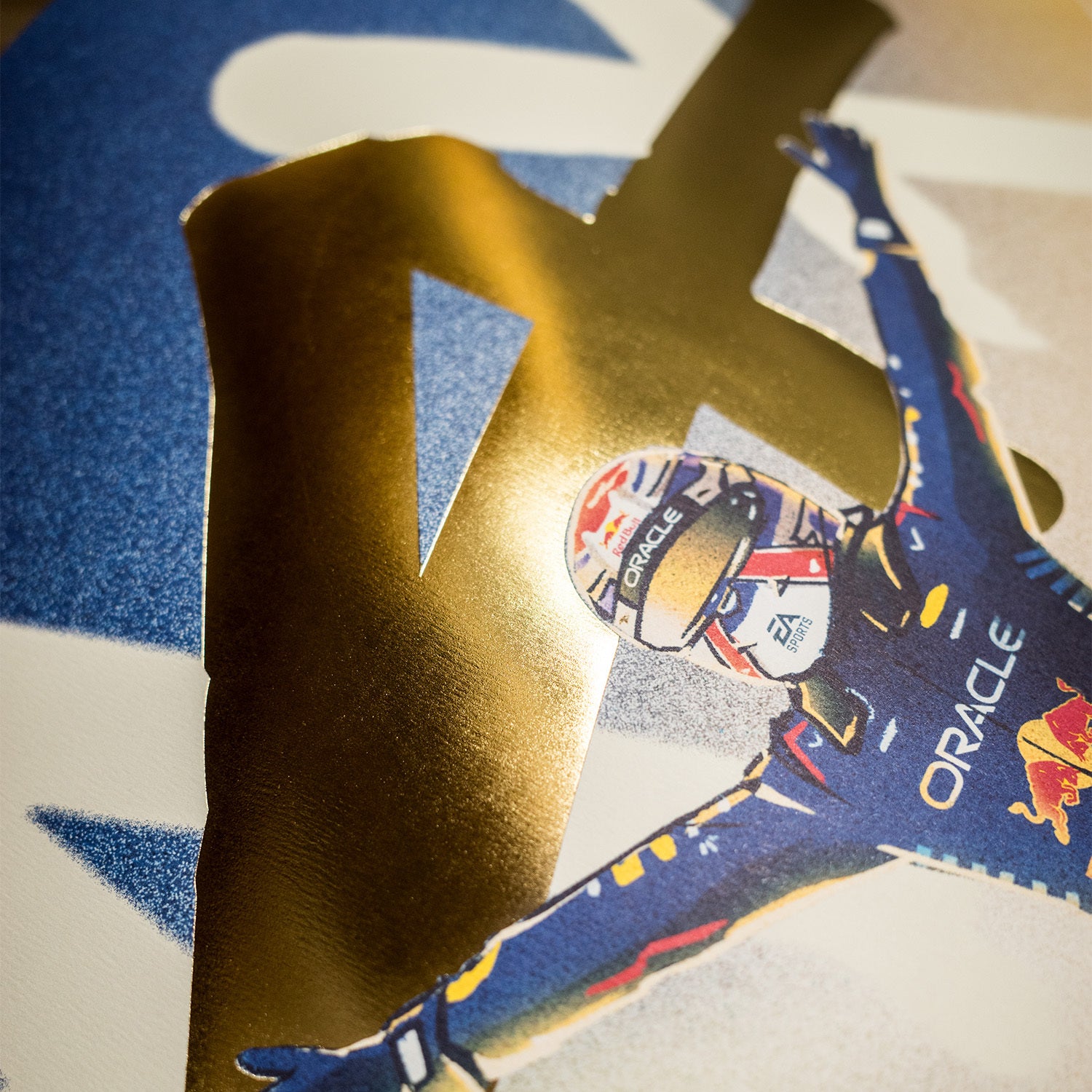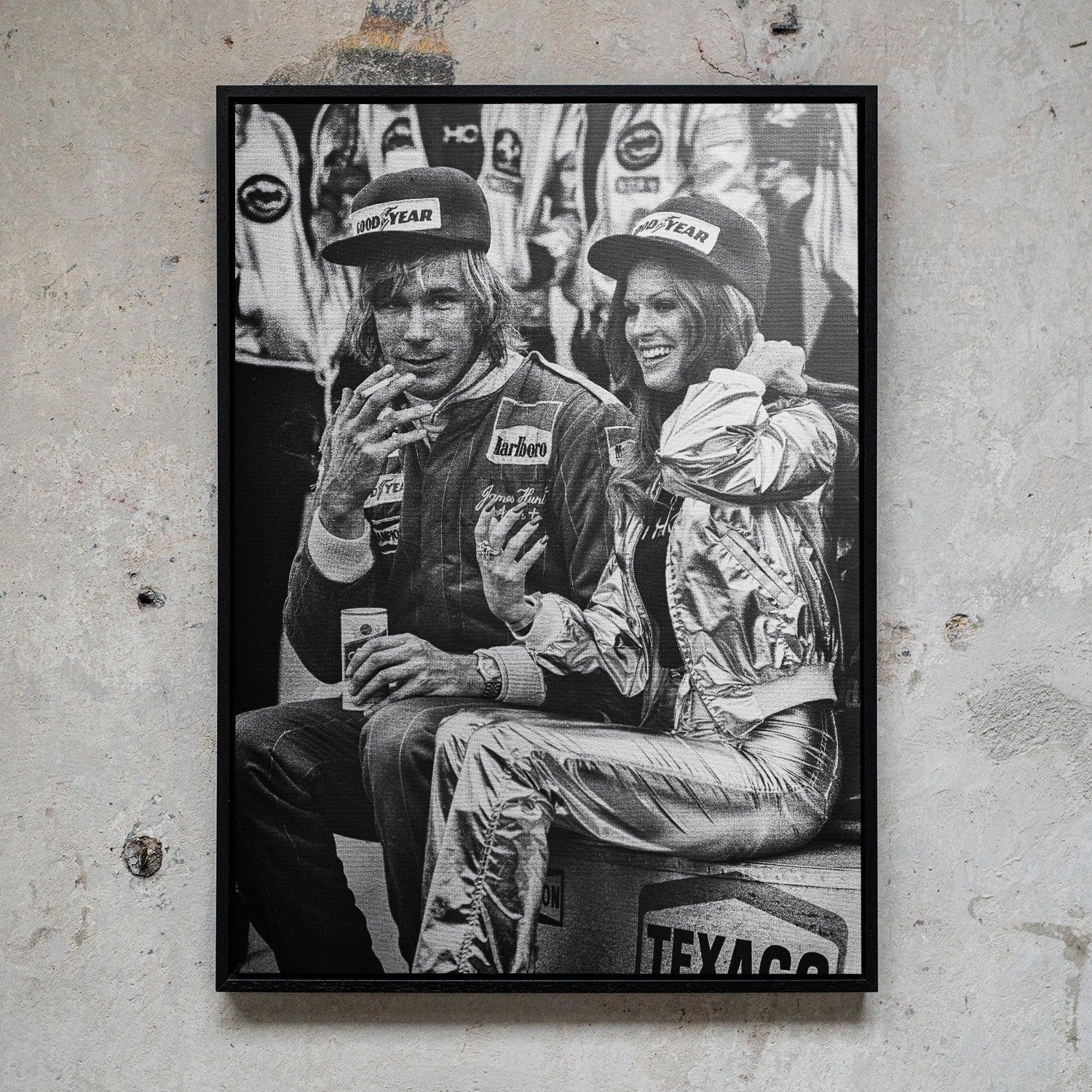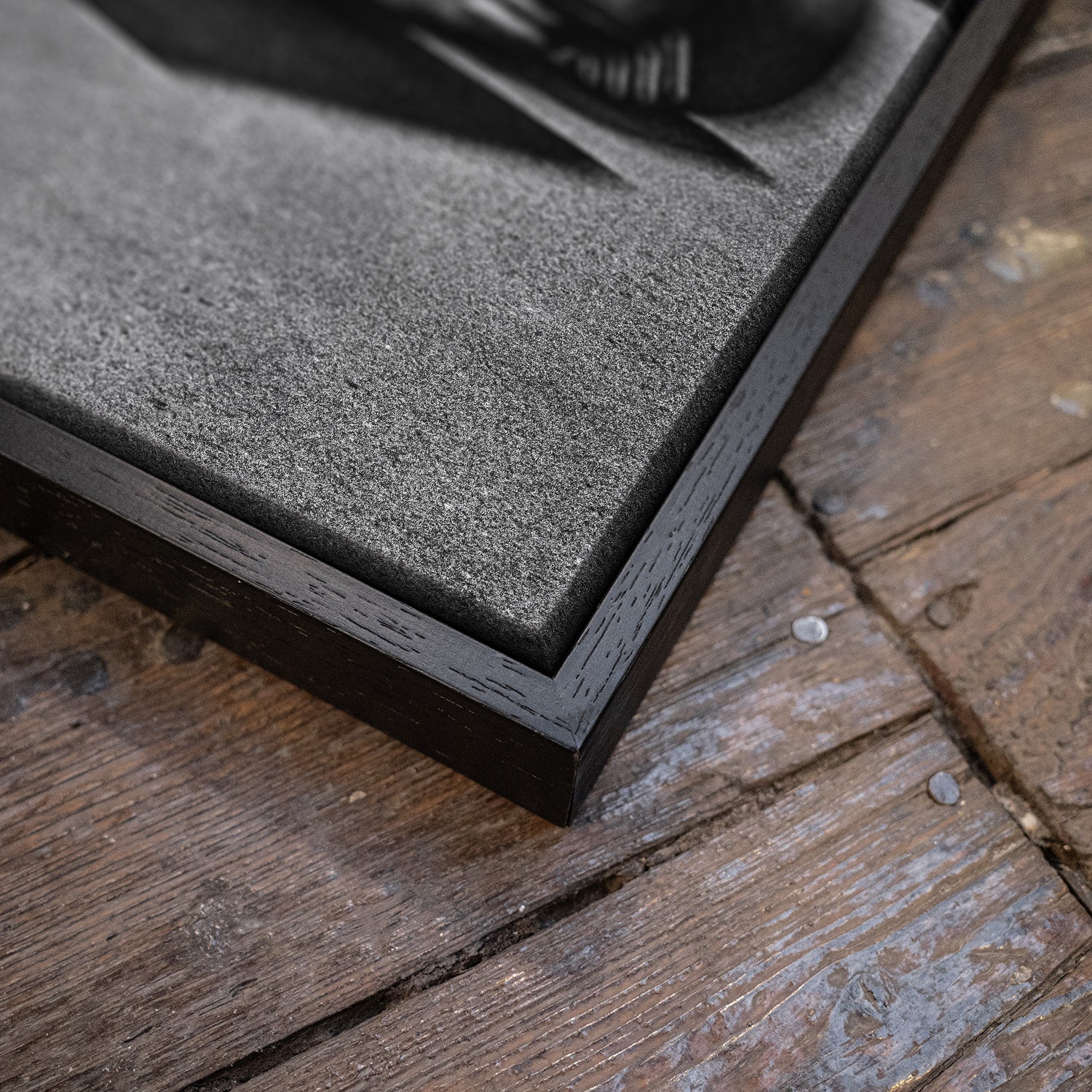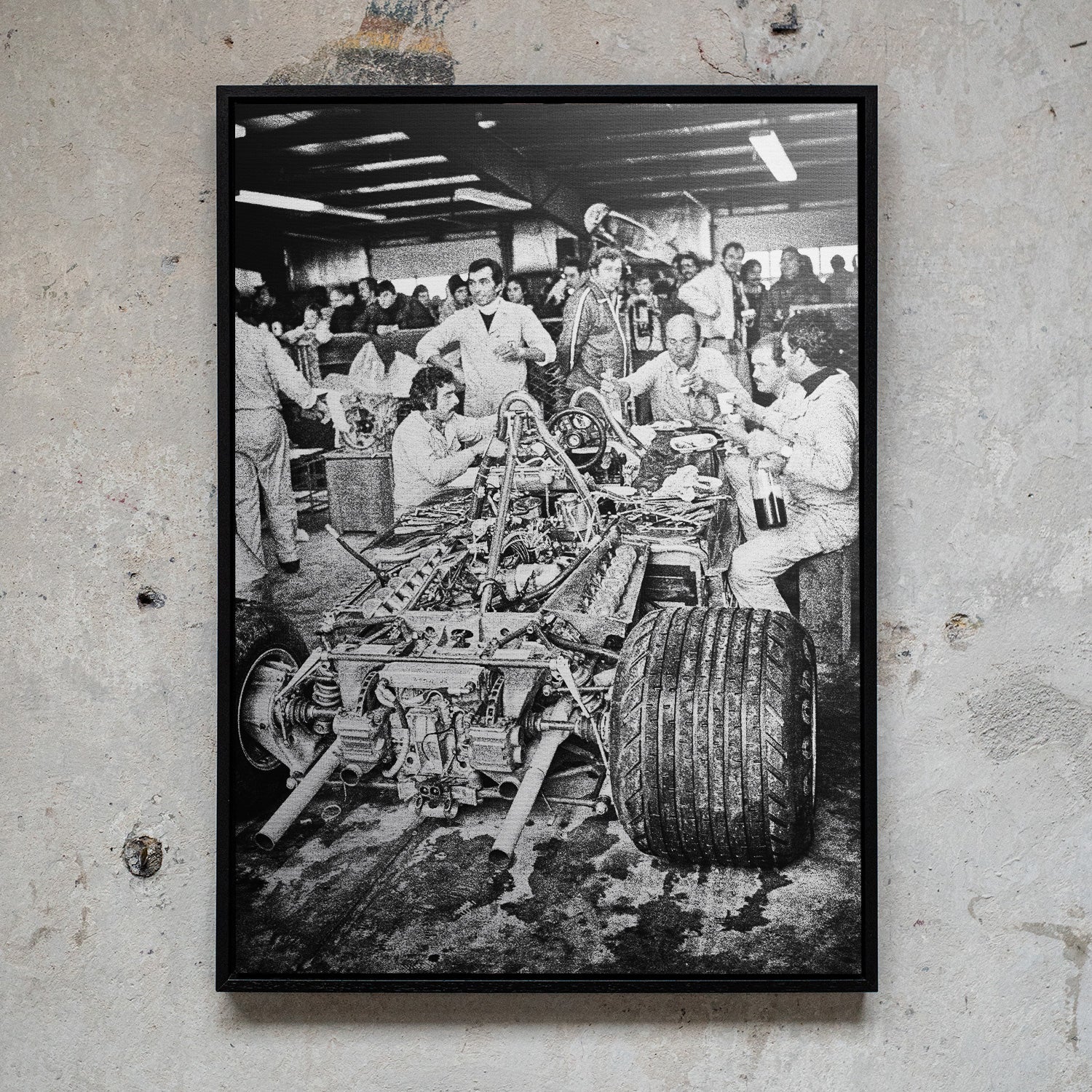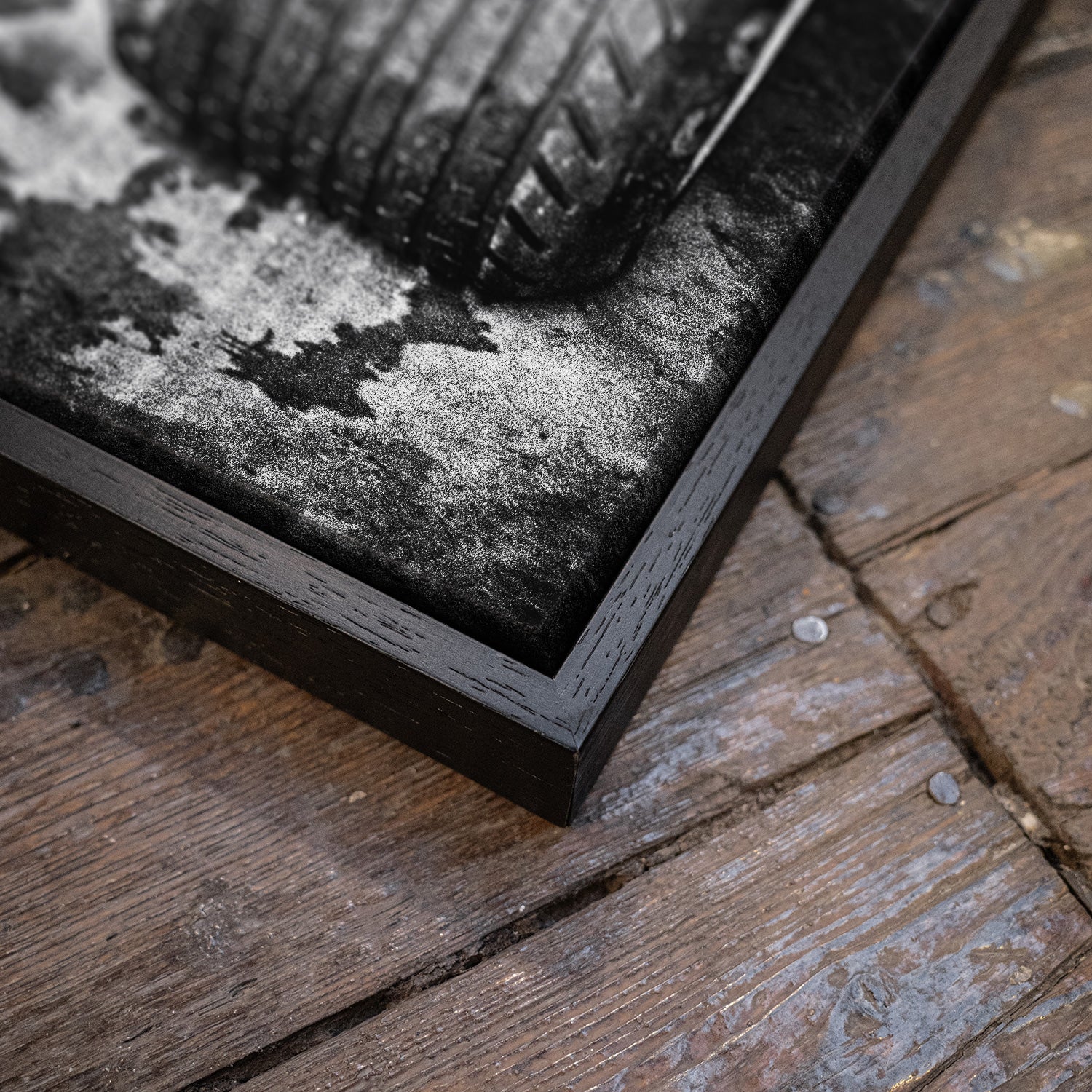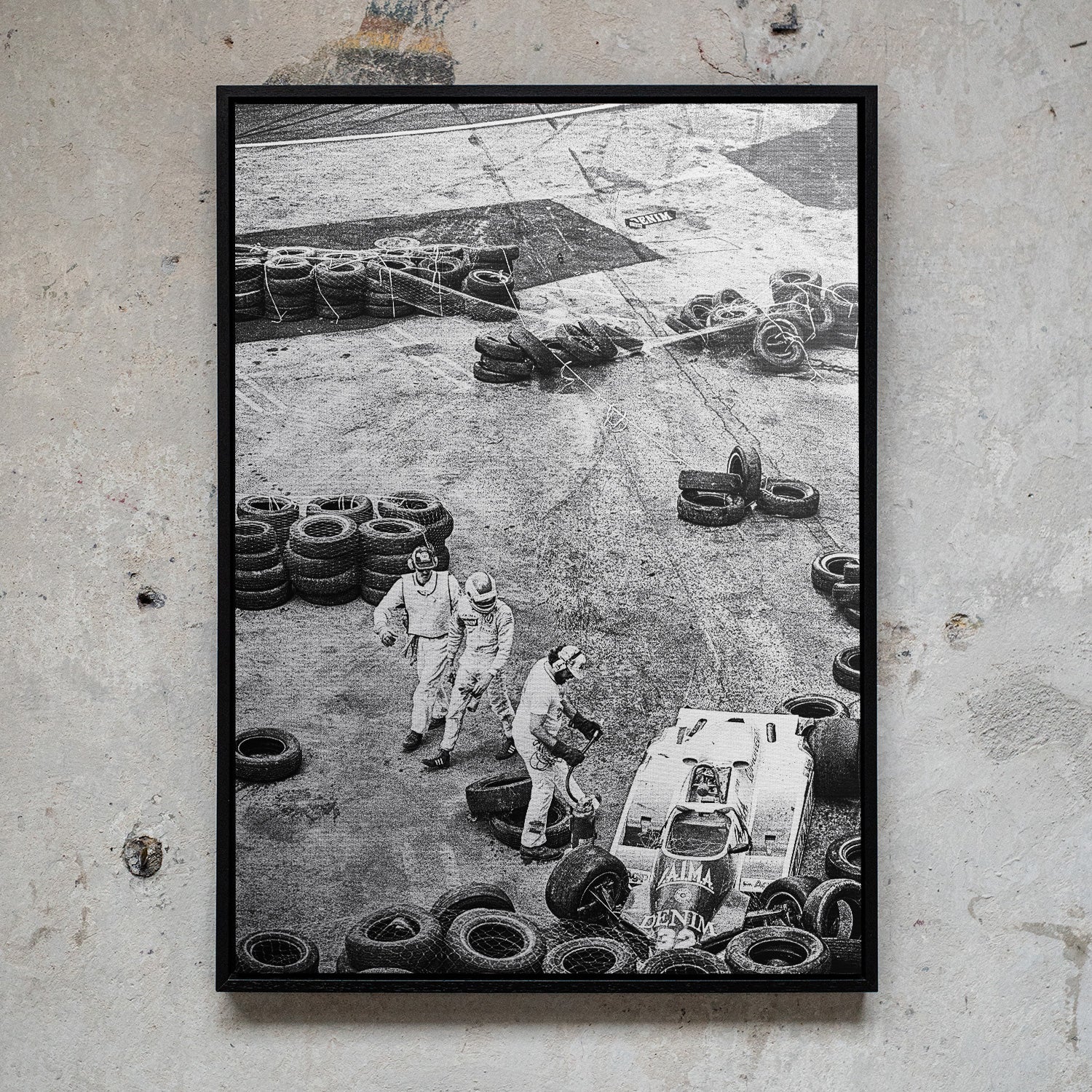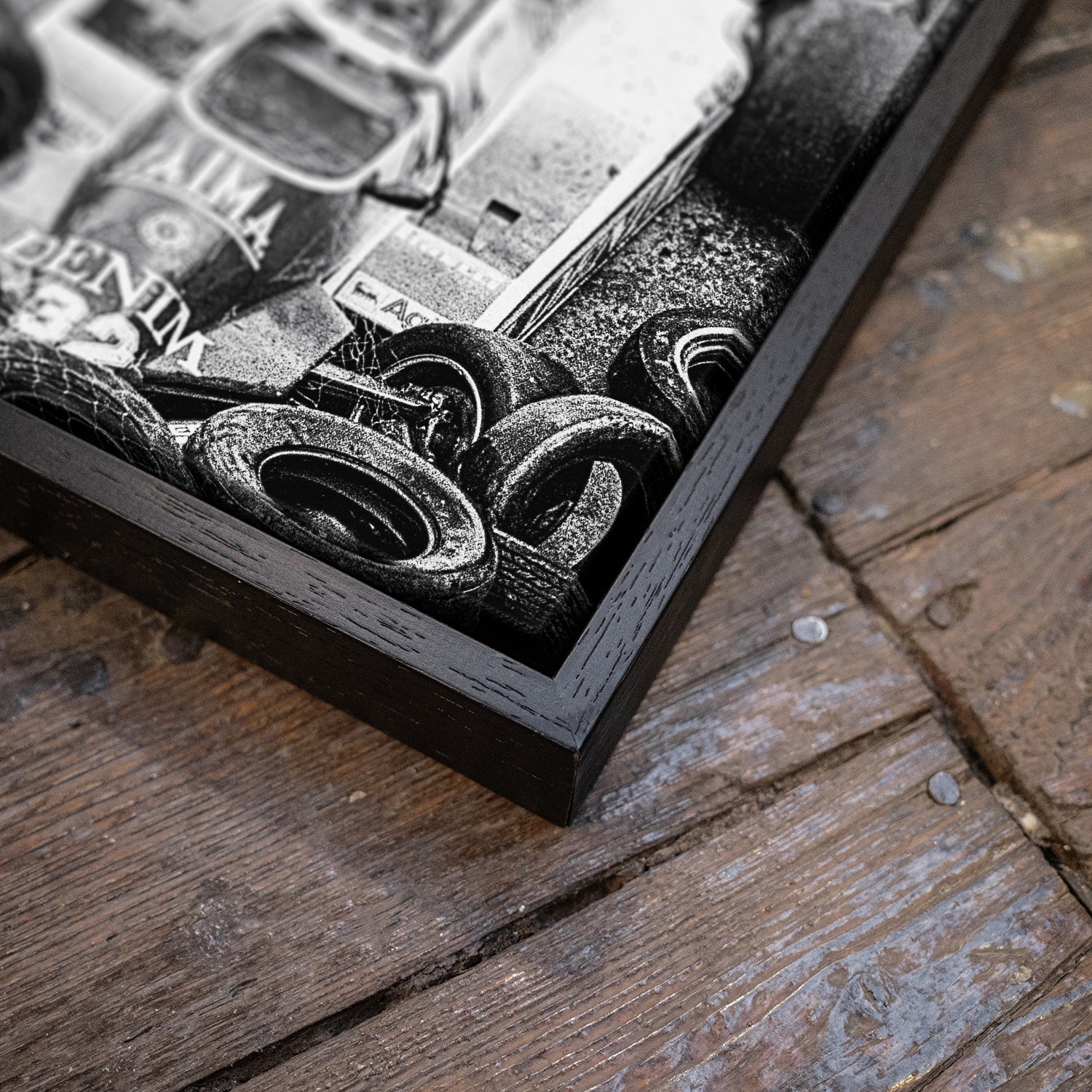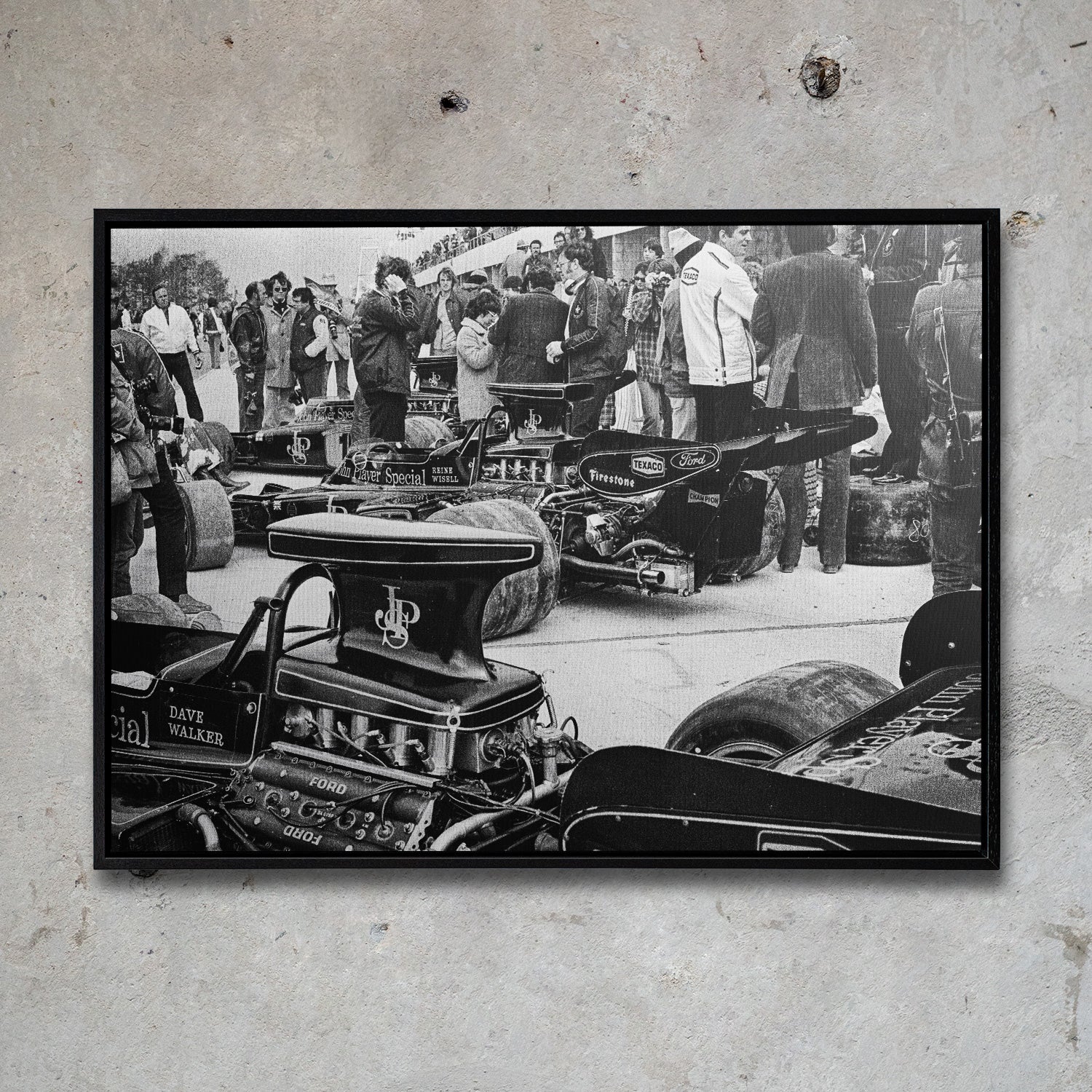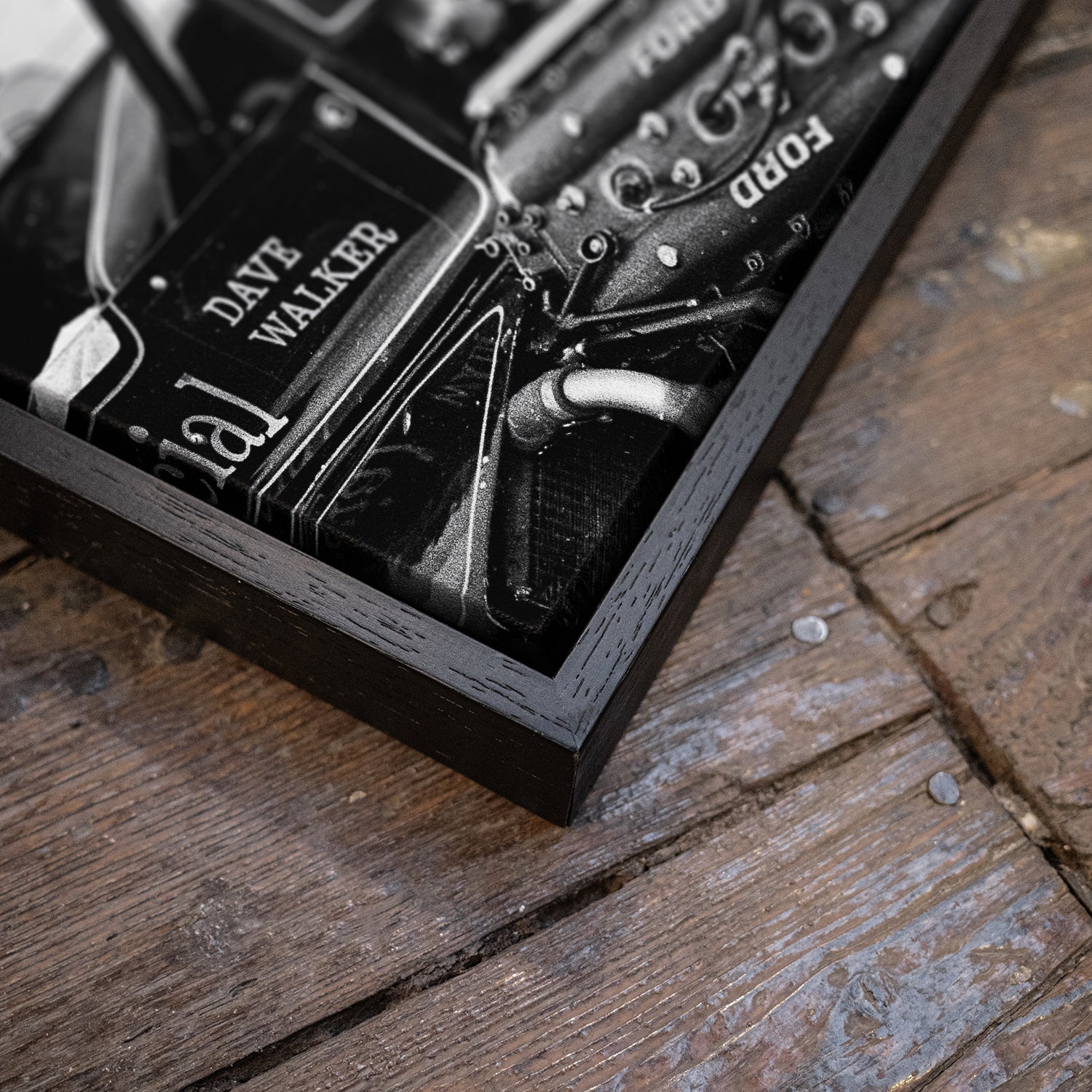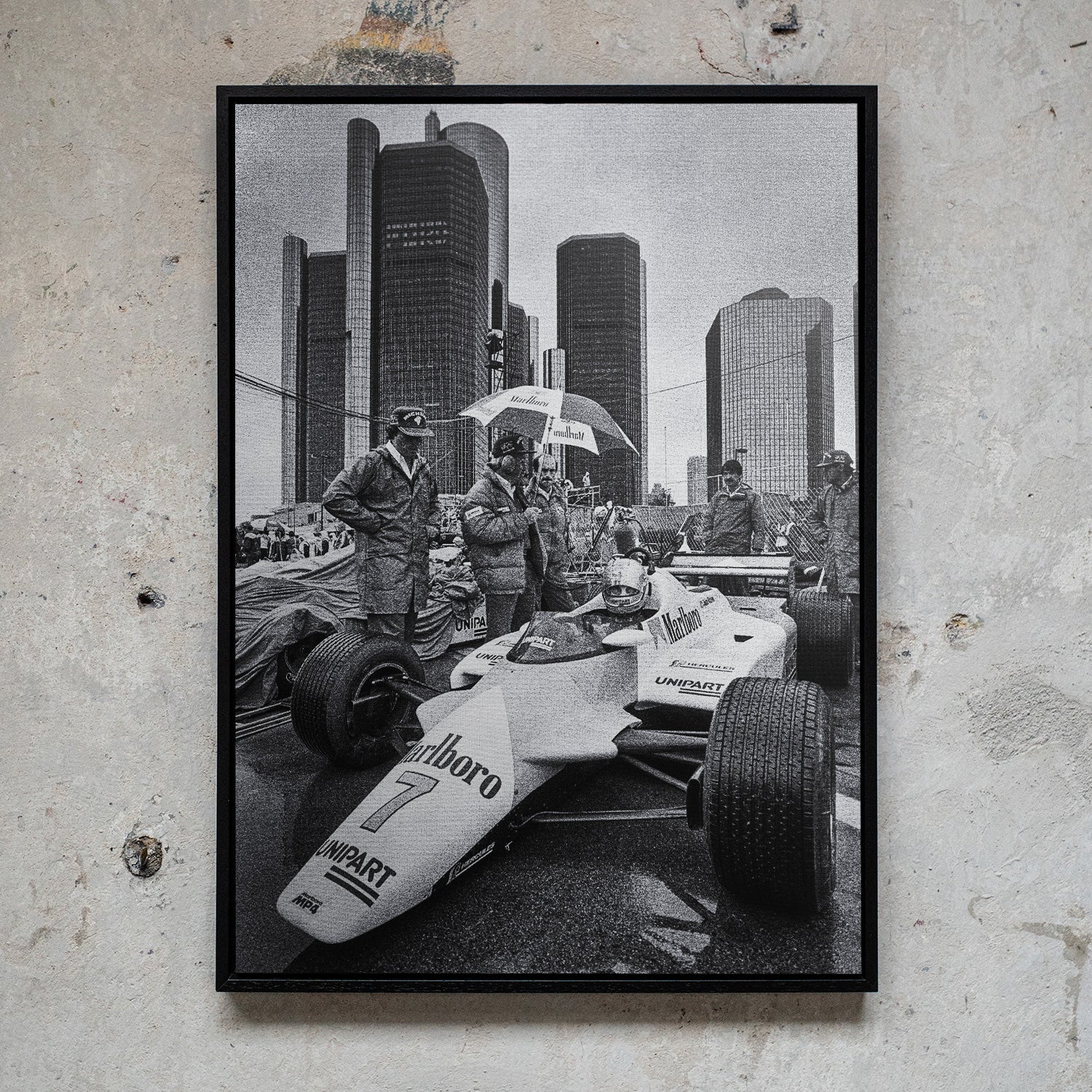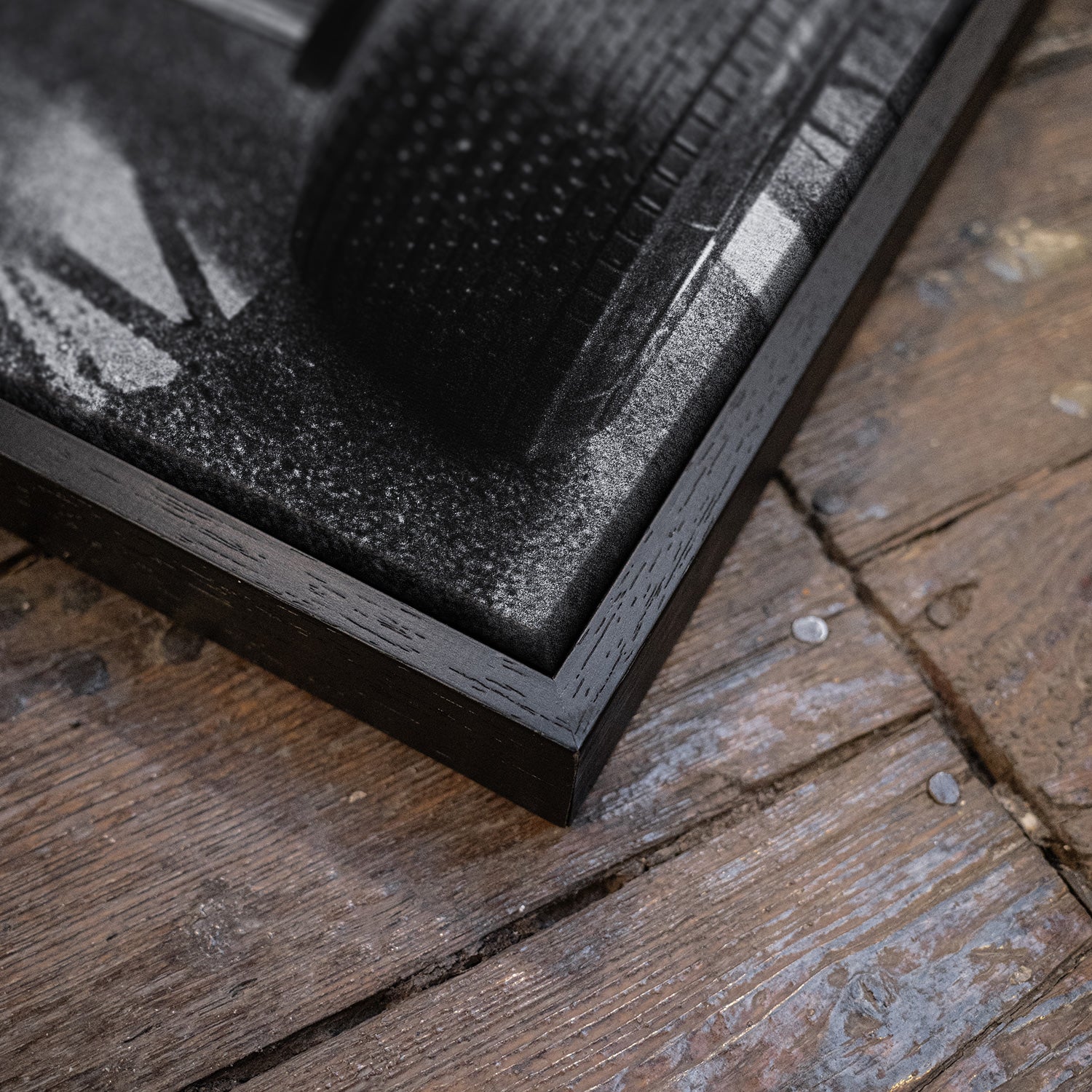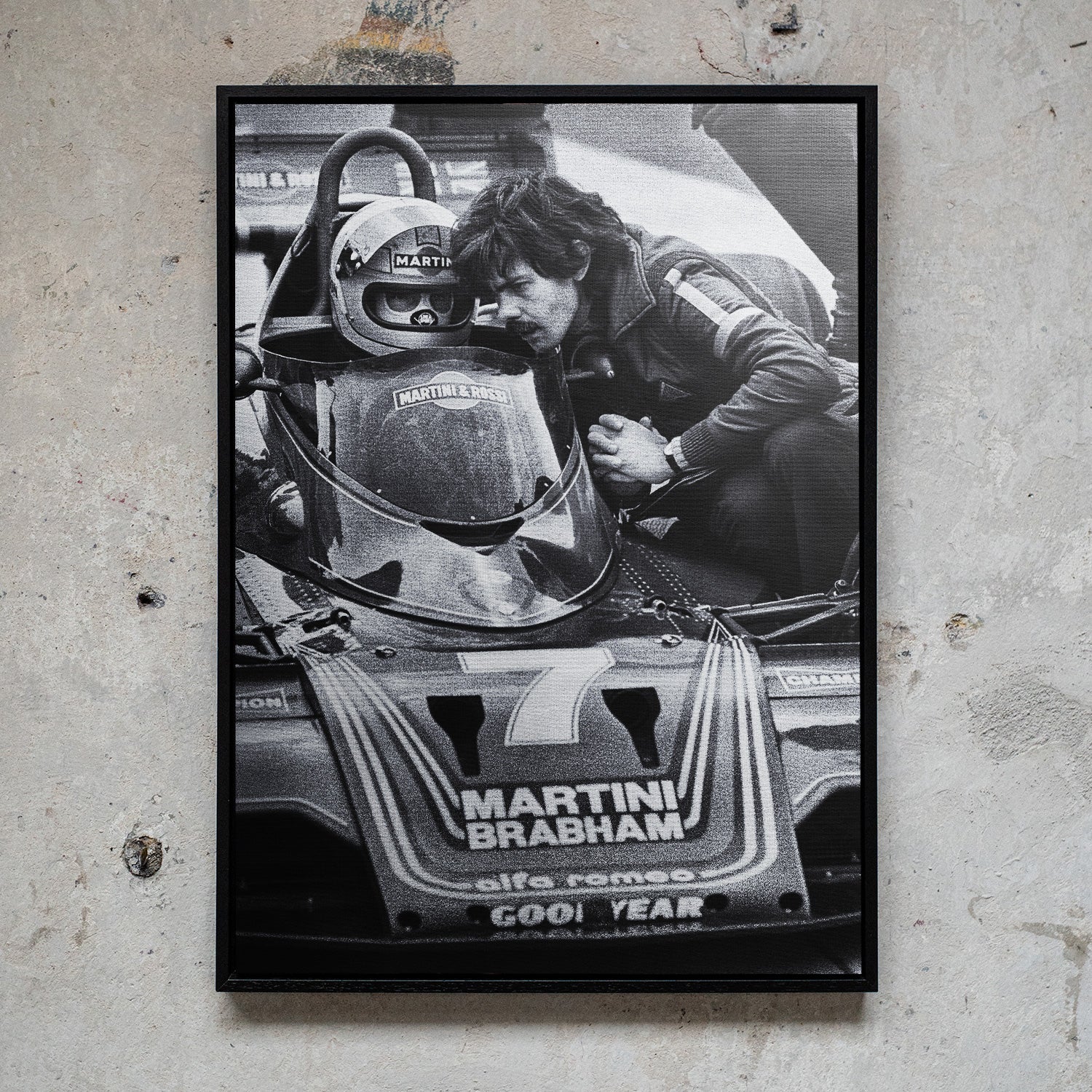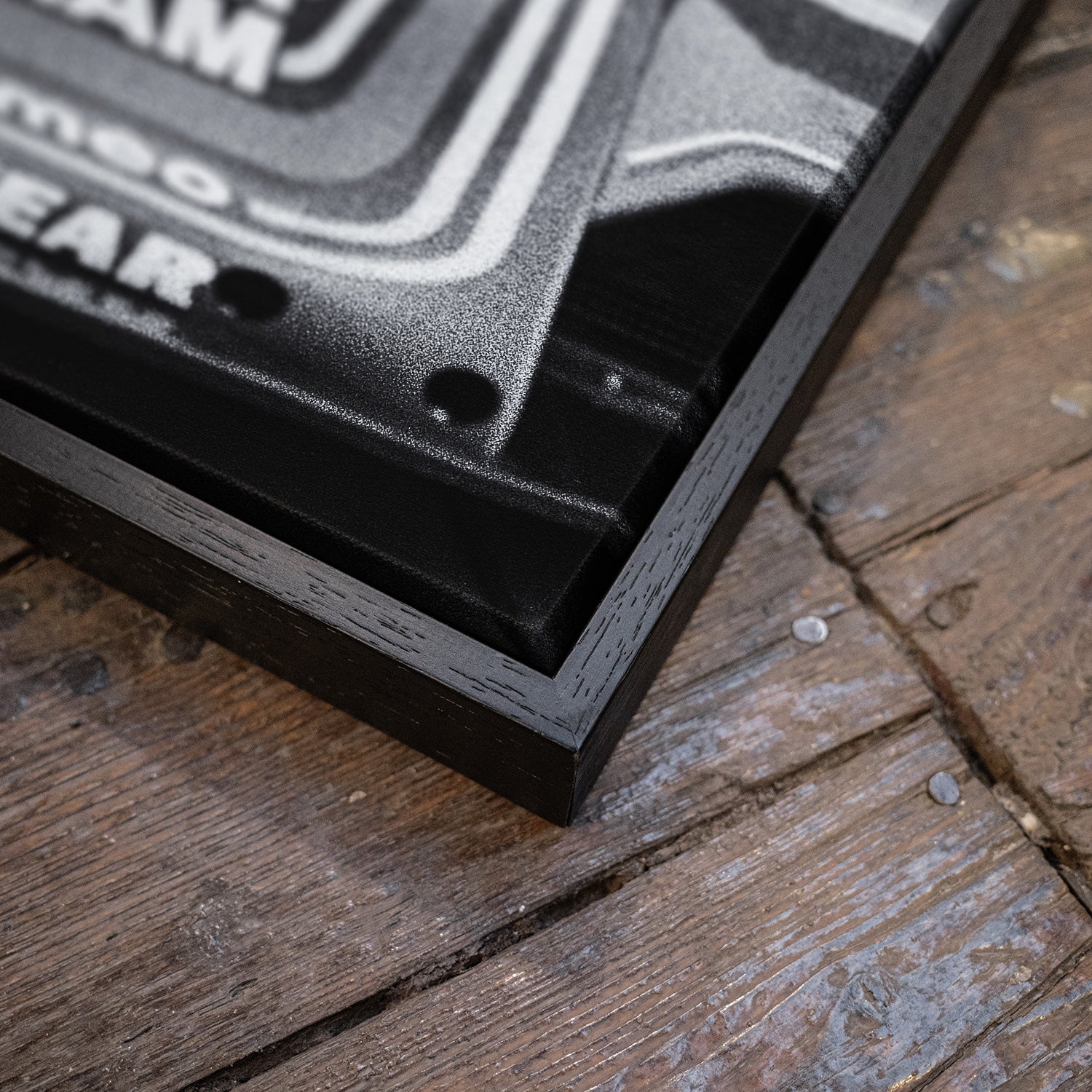Exploring Antarctica in The Snow Cruiser.
Visiting the inhospitable land mass of Antarctica has always had an irresistible appeal for explorers, many of them woefully ill-prepared, which explains the high and frozen body count under the ice, but when it comes to vehicles abandoned there, none could match the Snow Cruiser in terms of size behind the project. Looking back, one could call it a folly, or a tribute to the spirit of committed human endeavour.
Man’s ingenuity means that all sorts of strange vehicles were shipped to Antarctica to help the explorers, starting with sleds pulled by dogs, a primitive yet handy solution, as the dogs usually ended up being eaten when food supplies ran out.
Motorised vehicles soon followed, with Ernest Shackleton bringing the first motor car to the continent. It was not a great success as apart from the problems getting the tyres to grip on the ice and ploughing through deep snow, the engines tended to fail in the extreme cold. Robert Scott tried motorised sleds with tracks instead of wheels, but they were not much better.

As the Second World War loomed on the horizon, the main protagonists saw the importance of having a base in the Antarctic. The American adventurer Rear Admiral Richard E Byrd had established two bases on the continent in the early 30s and as the perceived threat level from other nations increased, the USA government wanted bases established there and it decided that Byrd was their man. Along with his colleague, Dr. Thomas Poulter, and working with the Armour Institute of Technology in Chicago, he designed the Snow Cruiser, which looked like a cross between a bus and a tank. At 55 feet long and 20 wide, weighing in at a staggering 37 tonnes, it had a range of 8000 miles. The plan was that its crew of four could stay in Antarctica for a year, using it as their base. It had living quarters with food storage, a galley, a dark room, a machine shop and even room to park a light aircraft on the roof. Two giant diesel engines were claimed to be able to allow it to hit speeds of over 50 mph. Its giant wheels could move independently and be retracted into the bodywork where the 10-foot tall tyres could be heated. This was the vehicle that was going to change the face of polar exploration and the US government handed over the equivalent in today’s terms of 3 million dollars to build the behemoth. Once built, its ability to cope with snow and ice was tested in sand dunes near Gary, Indiana.

However, even before it got to its destination there were problems. Travelling by road from the factory in Chicago where it was built to Boston from where it was due to be shipped to Antarctica, causing 20 mile traffic jams on the way, it actually crashed off the road and was almost impossible to shift. It finally set sail on the North Star on 15 November 1939.
It arrived at the base known as Little America a couple of months later, but didn't get off to any sort of smooth start, crashing through the wooden ramp off the ship and only just making it onto the ice. The vehicle struggled with traction, and could move at a much reduced speed... in reverse!
Movement continued to be a struggle and eventually the Antarctic Cruiser was used as a static base and research centre, with an extremely efficient heating centre. As the Little America base was abandoned in 1941, the Cruiser was left abandoned and eventually buried under drifting snow.

During Operation Highjump in late 1946, officially titled 'The United States Navy Antarctic Developments Program', an expedition team found the vehicle and discovered it needed only air in the tires and some servicing to make it operational. At the end of this operation, not until 1958 was the huge red beast seen again, when a multi-national expedition excavated its snowy grave. Inside the vehicle lay remnants from was exactly when it was left - with papers, magazines, and cigarettes scattered all around. It is assumed that it is now buried once more under the Bay of Whales although there were fanciful suggestions that the Russians had dug it up and rescued it. With Antarctic ice in constant motion and new of the Ross Ice Shelf breaking off, where parts of Little America was once located, it is not known whether the Antarctic Cruiser lay on this side of the shelf and could well be at the bottom of the ocean.
In the current age of risk assessment when simulation tools can predict every aspect of a piece of machinery’s behaviour before it’s even built, a project like the Antarctic Cruiser would never have got off the ground. That it did is a tribute to the optimism and spirit of adventure that was behind all the greatest innovations the world has seen.

The Antarctic Snow Cruiser and the Tucker Sno-Cat developed last year are two of Automobilist’s more unusual artwork offerings and part of our Extraordinary Vehicles series, where we marvel at feats of madcap engineering. Every winter, the creative team at Automobilist delves into the depths of research of human endeavour to identify an extraordinary vehicle that has been developed to master the forces of nature. With no official design documentation available, these vehicles are then developed into 3D renderings through detailed study of images, angles, textual description, and a whole lot of fun.
Images courtesy Associated Press / CC Shirley - United States Antarctic Service / Automobilist
